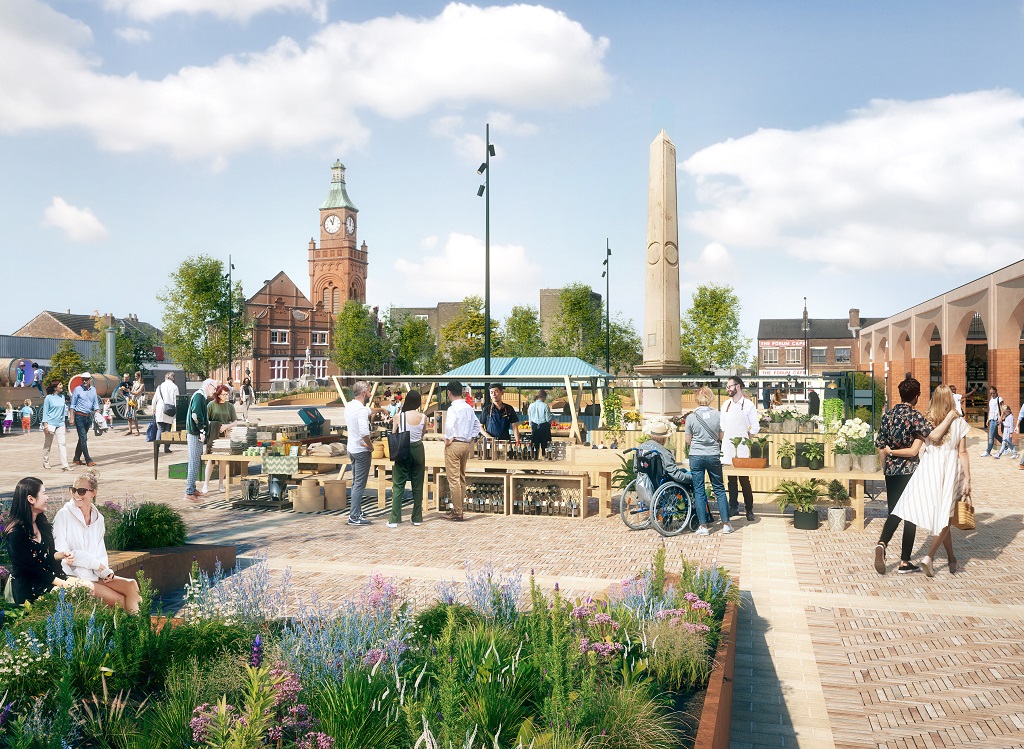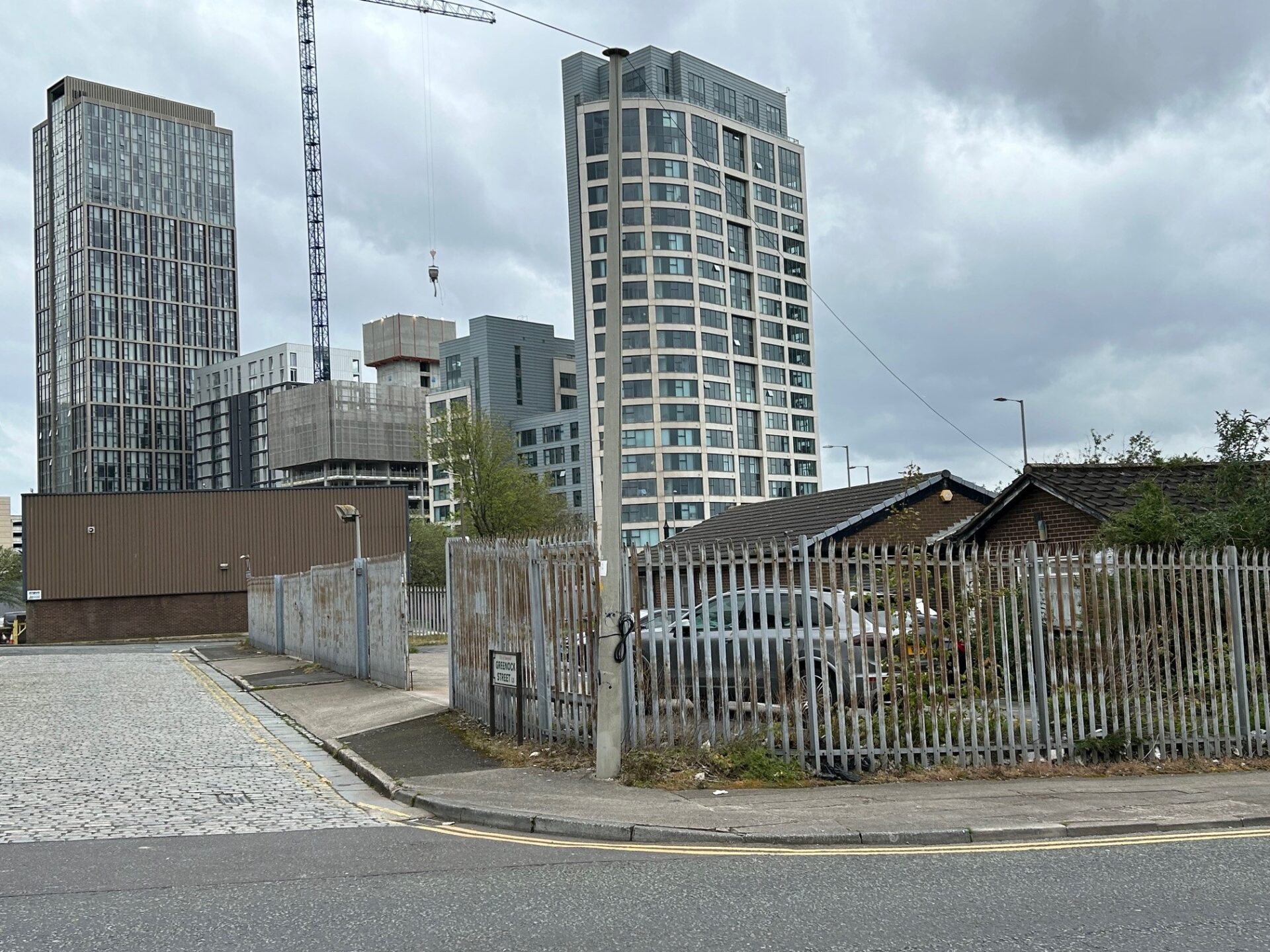The Subplot
The Subplot | Liverpool’s big plan, Hull’s big plan
Welcome to The Subplot, your regular slice of commentary on the business and property market from across the North of England and North Wales.
THIS WEEK
- Ten takeaways from Liverpool’s new growth strategy: Subplot translates the official report
- Elevator pitch: your weekly rundown of what is going up, and what is heading the other way
LIVERPOOL’S BIG RETHINK
What the new Liverpool plan really means
Three of the smartest people in Northern city politics just published their thoughts on the way ahead for Liverpool. When you translate official language into human language, it makes a powerful read. Here are the top takeaways.
The Liverpool Strategic Futures Advisory Panel – a government/city region collaboration created last year – produced an interim report on Tuesday. Panel members Manchester’s Sir Howard Bernstein and former Labour leader of Leeds City Council Baroness Judith Blake, under chair Steve Rotheram, have come up with a seriously no-holds-barred analysis. They also have some bold proposals. But you need to be able to speak officialese to grasp how bold they’ve been. Subplot offers an English translation.
Baby vs bathwater
One of Liverpool’s big assets is its cityscape, its buildings, its urban texture. So don’t trash it in a dash for headline grabbers and quick on-the-ground results. “Many stakeholders acknowledge that some of Liverpool’s recent developments have fallen short in terms of coherence, and that a more sensitive approach is needed which plays to Liverpool’s place-quality, rather than simple development-led growth,” the panel said, choosing their language with care. Schemes like the Baltic Triangle and opportunities in the Ten Streets and Kings Dock areas illustrate the potential for quality-led regeneration that drives city centre density and enables Liverpool to compete for outside talent based on quality of life, the panellists added.
All those flats mean what?
Liverpool’s city centre population has mushroomed. But is it helping the economy? Are they the right kind of properties? Are they good enough? Somebody needs to think about that, the panel implies. “Aligning the city centre’s residential offer with an overarching strategy to increase productivity and skills underpins the panel’s second long-term economic priority for Liverpool – expanding the share of higher-value-added jobs by turbocharging science, R&D, and higher education,” is how the panel phrases it.
Being proud isn’t enough
Liverpool has plenty of pluses, but a list of pluses isn’t a strategy. “Many stakeholders engaged through the panel’s work felt that while Liverpool’s core assets (in R&D, higher education, and culture) were strong and distinct enough to drive future growth, how these factors add up to an economic vision could be crystalised and articulated more consistently,” the panel noted.
No more ‘city boss’ politics
From now on, less macho strutting, more talking. “Bringing together the relevant actors with a stake in Liverpool’s future, under a shared vision is a key function of economic place leadership. This involves leaders being open to challenge and inviting feedback on plans to establish citywide ownership and buy-in,” the report said.
No more underpants gnomes
TV classic South Park has an episode about the Underpants Gnomes. They steal pants as phase one of an ambitious business plan. Pressed to explain the other phases, a gnome says: Phase 1, collect underpants. Phase 2, ?, Phase 3: Profit. This is exactly the kind of magical thinking the panel wants Liverpool to stop – and by implication, thinks has been going on for too long. The panel say that the new vision for Liverpool over the next 10-15 years must be “underpinned by a clear theory of change – the empirical logic, policy mechanisms and inputs from the public, private, and third sectors, which taken together, can deliver the local vision.” And having come up with a plan, everyone sticks to it. This means to offer “stability, guide consistent, and transparent decision making,… support[ing] meaningful and effective partnership working between civic and place leaders across the city and wider region.”
A fresh pair of hands
The panel prints a long list of initiatives since the 1980s, which tells its own story: things work best when somebody other than the council is pulling the strings, or a crisis forces the pace. “Underlying this is a legacy of underdeveloped place leadership – the capability of democratically elected leaders to utilise their convening powers to establish an agreed vision for change in the city and secure wider institutional and stakeholder support in the delivery of that vision,” says Steve Rotheram in his introduction. “Plans and prospectuses, while helpful, are only as strong as the capacity to deliver their vision and external perceptions of this capability matter, not least for investment. Liverpool’s delivery capacity is currently below where it needs to be…” the authors add. A new body, bringing together the government, Homes England, the city, and the city region, could be the answer.
Join things up in the city centre
Make the pieces fit together, and get some office development going, is the panel’s strong implication. “The partnership’s initial focus would be Liverpool’s city centre and the waterfront, specifically the arc linking Bramley Moore Dock to the Knowledge Quarter, incorporating key development sites including Pall Mall, Liverpool Waters, and London Road, capitalising on the investment zone status being established at Paddington Village. Delivery of key sites across this footprint, utilising Liverpool City Council’s existing work in this area, provides an opportunity to demonstrate the potential of the model while unlocking delivery in a high impact area of the city.”
The first piece of the jigsaw could be Pall Mall. Hopes are growing that the 400,000 sq ft scheme might spring into life (after four years of nothing much). Kier Property and CTP secured an extension of planning permission in 2022, and speaking to Subplot earlier this autumn Liverpool City Council Leader Cllr Liam Robinson sounded encouraging about a wrap-around council lease to get the development going.
If it works in the city centre, expand
One thing at a time, please. Don’t run before you can walk. The new regeneration approach could “over time…. be replicated elsewhere in priority areas of the city, subject to evaluation of its initial area of focus. There is a strong case for regeneration and housing upgrades across North Liverpool, such as at Goodison Park and Anfield, and the panel would also anticipate exploration of opportunities to collaborate with neighbouring local authorities in time.”
Grab life sciences sector chances now
Liverpool is the place, and now is the time, for life science investment. This is not a moment to hesitate or fumble. The panellists appear to be taking aim at the government, rather than local players – and that probably means it wants to see money backing the newly minted investment zone. The Liverpool City Region Combined Authority has “identified a number of constraints on the growth of this sector, however, particularly focussed on viability gaps for new developments, a shortage of lab space, and a lack of sufficient skilled workers for the sector. Ensuring this cluster meets its full potential will therefore require concerted intervention to unlock these growth barriers and ensure Liverpool can compete nationally and internationally,” the panel warns. See Elevator Pitch for more on this.
We’re watching you
The panel don’t want to see you nodding, they want to see you doing things. And ‘you’ means the city, the city region, and government: “…we will be expecting to see the projects we detail above be operationalised, and developed into permanent proposals, by the spring. Central to our assessment of progress will be clear evidence of strong collaboration between the city council, the city region, partners in central government, and more widely across the city.” They expect an update from the local players by March 2024. The implication here is that if it looks promising, the government will probably feel inclined to chip in. Final recommendations will go to the government soon after.
 ELEVATOR PITCH
ELEVATOR PITCH
Going up or going down? This week’s movers
Something is brewing in Hull’s Western Docks as med-park plans begin to grow. At the other side of the country, Liverpool is also preparing for a life sciences boom. Doors closing, going up.
 Hull med-tech and the Western Docks
Hull med-tech and the Western Docks
Trailed in the chancellor’s Autumn Statement, but in preparation for ages beforehand, the Hull and East Yorkshire devolution deal was signed on Monday. The first Mayoral election will be in 2025.
Property industry interest focuses on the ridiculously tenuous promise to “a commitment…to consider” developing a specialist med-tech business park in Hull, including exploring support for phase one of the project. Even this modest commitment from the government is “subject to further discussions.”
Deep in the undergrowth of paragraph 152 the devo deal clarifies that this is meant to build on the strength of specialists at the University of Hull (with the Hull-York Medical School), Hull Royal Infirmary and the private sector businesses. Local med tech giant Smith & Nephew said last year it would relocate to an £80m facility at nearby Melton, because it couldn’t find a city site. It said at the time they’d be happy to work with the council on the old Hessle Road’s site’s future.
Could Hull’s Western Docklands could be the area to watch? The city council is working on a design brief for the site between Hessle Road and Albert Dock including Kingston Retail Park.
 Merseyside laboratories
Merseyside laboratories
The clock is ticking on a consultation of Liverpool City Region’s emerging strategic development strategy – a big plan like Greater Manchester’s Places for Everyone, designed to shape property development to the region’s economic agenda. Generous housing allocations have made the headlines, but the office/laboratory/R&D allocation may be more significant for the regional economy. Start reading at page 66.
The plan – which wraps up existing allocations from the six boroughs and takes the story forward to 2040 – suggests up to 2.1m sq ft for offices, and 930,000 sq ft for the rest.
Liverpool gets the lion’s share of both (1.4m sq ft offices and 570,000 sq ft of labs/R&D), followed by Wirral (186,000 sq ft and 88,000 sq ft respectively) and Knowsley (304,000 sq ft and 99,000 sq ft).
The numbers find their way into the strategy thanks to an analysis of future need completed in June. This report suggests most of the new space isn’t net additional, but substituting for poor quality stock. The trouble is these kinds of documents – based on trends at the time of writing – are inevitably driving with the rear-view mirror. The question now is how well the office/research floorspace allocation meshes with the conclusions of the Liverpool Strategic Futures Advisory Panel. Is 930,000 sq ft of lab and research space – just half of it in Liverpool – enough?
Get in touch with David Thame: david.thame@placenorth.co.uk





Dear Sir or Madam, As an Underpant-wearing Gnome I object to you abusing using our name metaphorically. This causes us real hurt as an oppressed minority struggling for wider acceptance in society. Yours, Underpant Gnomes Community, North England Section.
By Anonymous
The Baltic Triangle needs the jump-leads, as except for Legacie’s Parliament Square the newbuilds aren’t happening. The small scheme on Jamaica St for a 7 storey office and MSCP now looks only to be a means of increasing land-value. In addition the Norton site has planning permission but no action, I think that would be a good one for Ridgeback to take on. A few bars and restaurants have closed in the Baltic lately and that’s why the population needs to increase around there with some mid/high-rise blocks.
By Anonymous
Savvy analysis of the Liverpool Strategic Futures Advisory Panel report. Thanks PNW.
By Gnome Alone
A strategy would be nice. Who knew? Also building something occasionally as a result of a strategy. There, hope I helped.
By Anonymous
Overall, it seems Liverpool and the city region is finally been clear. You can sense things have started turning already. The key leaders seem much more measured and mature. The only fly in the ointment is the ridiculous tall buildings strategy – why set a limit on height and ambition? I think height restrictions should only apply for building in the immediate vicinity of key assets like the graces. Elsewhere, let the market decide.
By Chris
LCC have reprocured on other sites, why not take a look at the CTP-Kier arrangement? What are CTP bringing? Why haven’t Kier got off their backside? How much is the private sector looking to invest here – is this going to be another majority publicly-funded deal? Not real investment if so.
Liverpool should grasp the mettle with this site and go out to the wider market – good opportunity to bring in new blood and dust off the cobwebs from the lazy incumbents.
By Lazy incumbents
Hull has been ignored for years, but it needs to do something very different to Manchester or Leeds to regenerate.
By EYORKS
To the commenter “Lazy Incumbent” – CTP was effectively the late and great David Topham, who sadly passed away during the pandemic. It is disappointing that Pall Mall hasn’t happened yet, but your comment is inappropriate.
By Andy Delaney
@Andy D – I don’t think my comment, in part questioning what CTP are bringing is inappropriate at all – they are still named as a partner to the project. The sad loss of a respected figure who effectively “was” the business just raises the question evermore: why don’t the city look for new partners?
By Lazy incumbent
The sooner Hull is linked by the fast rail network across E to W via Leeds, Mcr, and L’pool the more it will prosper.
The North will still thrive without a high-speed London link.
By Anonymous